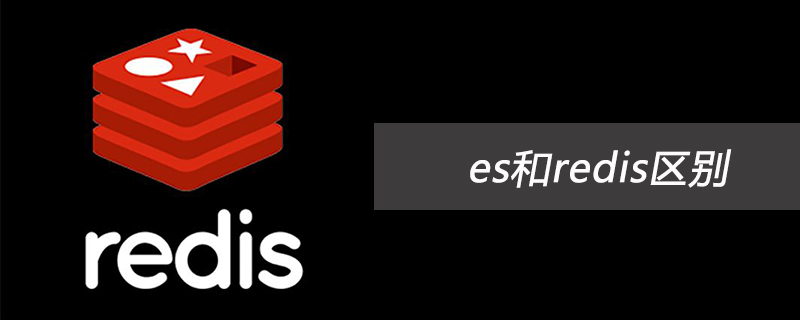
How to use Redis and Scala to develop cache preheating function
Cache preheating is a commonly used optimization strategy. By loading hotspot data into the cache in advance, you can Reduce latency in user requests. During the development process, it is a common way to use Redis and Scala to implement cache preheating function. This article will introduce how to use these two technologies to develop cache warm-up functions and give specific code examples.
- Introducing Redis and Scala dependencies
First, you need to introduce Redis and Scala dependencies into the project's build file. For Redis, you can use the Redisson library to operate Redis. The specific dependencies can be added in Maven or SBT with the following configuration:
<!-- Redisson -->
<dependency>
<groupId>org.redisson</groupId>
<artifactId>redisson</artifactId>
<version>3.12.6</version>
</dependency>For Scala, you need to add the corresponding Scala library dependencies, for example, in build.sbt Add the following configuration:
libraryDependencies += "org.scala-lang" % "scala-library" % "2.13.4"
- Connect to Redis
In Scala code, you can use the Redisson library to connect to Redis. First, you need to create a RedissonClient instance to connect to Redis. The specific code is as follows:
import org.redisson.Redisson
import org.redisson.api.RedissonClient
import org.redisson.config.Config
val config = new Config()
config.useSingleServer().setAddress("redis://localhost:6379")
val redissonClient: RedissonClient = Redisson.create(config)The default address and port of Redis are used here. If Redis runs on other addresses or ports, the above code needs to be modified accordingly.
- Implementation of cache preheating
The implementation of cache preheating requires loading hotspot data into Redis, which can be achieved by pre-defining a function for loading data. The specific code is as follows:
import org.redisson.api.RMap
val map: RMap[String, String] = redissonClient.getMap("cache")
val hotData: Map[String, String] = loadData() // 加载热点数据的函数
hotData.foreach { case (key, value) =>
map.fastPut(key, value)
}The above code first obtains a Map object through redissonClient to operate the cache in Redis. Then, load the hotspot data through the loadData function and put the data into Redis one by one. The loadData function here needs to be written according to actual needs. It can obtain data from the database or other data sources and return a Map of key-value pairs.
- Calling cached data
In actual applications, cached data needs to be used. The cached data in Redis can be obtained through the following code:
val value: String = map.get(key)
if (value == null) {
// 缓存中不存在数据,从其他数据源中获取并放入缓存
val data: String = getDataFromOtherSource(key) // 从其他数据源获取数据的函数
map.fastPut(key, data)
value = data
}The above code first obtains the data in the cache through the get method of Map. If the data does not exist, it can be obtained from other data sources and the data Put in cache. This way, on the next access, the data can be fetched directly from the cache without having to access other data sources again.
The above are the detailed steps and code examples for developing cache preheating function using Redis and Scala. By preloading hotspot data into Redis, the performance and response speed of the system can be effectively improved. Of course, in actual applications, further optimization and adjustments need to be made according to specific circumstances, such as setting the cache expiration time, implementing cache elimination strategies, etc. Hope this article is helpful to you!
The above is the detailed content of How to develop cache preheating function using Redis and Scala. For more information, please follow other related articles on the PHP Chinese website!
 es和redis区别Jul 06, 2019 pm 01:45 PM
es和redis区别Jul 06, 2019 pm 01:45 PMRedis是现在最热门的key-value数据库,Redis的最大特点是key-value存储所带来的简单和高性能;相较于MongoDB和Redis,晚一年发布的ES可能知名度要低一些,ES的特点是搜索,ES是围绕搜索设计的。
 一起来聊聊Redis有什么优势和特点May 16, 2022 pm 06:04 PM
一起来聊聊Redis有什么优势和特点May 16, 2022 pm 06:04 PM本篇文章给大家带来了关于redis的相关知识,其中主要介绍了关于redis的一些优势和特点,Redis 是一个开源的使用ANSI C语言编写、遵守 BSD 协议、支持网络、可基于内存、分布式存储数据库,下面一起来看一下,希望对大家有帮助。
 实例详解Redis Cluster集群收缩主从节点Apr 21, 2022 pm 06:23 PM
实例详解Redis Cluster集群收缩主从节点Apr 21, 2022 pm 06:23 PM本篇文章给大家带来了关于redis的相关知识,其中主要介绍了Redis Cluster集群收缩主从节点的相关问题,包括了Cluster集群收缩概念、将6390主节点从集群中收缩、验证数据迁移过程是否导致数据异常等,希望对大家有帮助。
 详细解析Redis中命令的原子性Jun 01, 2022 am 11:58 AM
详细解析Redis中命令的原子性Jun 01, 2022 am 11:58 AM本篇文章给大家带来了关于redis的相关知识,其中主要介绍了关于原子操作中命令原子性的相关问题,包括了处理并发的方案、编程模型、多IO线程以及单命令的相关内容,下面一起看一下,希望对大家有帮助。
 Redis实现排行榜及相同积分按时间排序功能的实现Aug 22, 2022 pm 05:51 PM
Redis实现排行榜及相同积分按时间排序功能的实现Aug 22, 2022 pm 05:51 PM本篇文章给大家带来了关于redis的相关知识,其中主要介绍了Redis实现排行榜及相同积分按时间排序,本文通过实例代码给大家介绍的非常详细,对大家的学习或工作具有一定的参考借鉴价值,希望对大家有帮助。
 实例详解Redis实现排行榜及相同积分按时间排序功能的实现Aug 26, 2022 pm 02:09 PM
实例详解Redis实现排行榜及相同积分按时间排序功能的实现Aug 26, 2022 pm 02:09 PM本篇文章给大家带来了关于redis的相关知识,其中主要介绍了Redis实现排行榜及相同积分按时间排序,本文通过实例代码给大家介绍的非常详细,下面一起来看一下,希望对大家有帮助。
 一文搞懂redis的bitmapApr 27, 2022 pm 07:48 PM
一文搞懂redis的bitmapApr 27, 2022 pm 07:48 PM本篇文章给大家带来了关于redis的相关知识,其中主要介绍了bitmap问题,Redis 为我们提供了位图这一数据结构,位图数据结构其实并不是一个全新的玩意,我们可以简单的认为就是个数组,只是里面的内容只能为0或1而已,希望对大家有帮助。
 一起聊聊Redis实现秒杀的问题May 27, 2022 am 11:40 AM
一起聊聊Redis实现秒杀的问题May 27, 2022 am 11:40 AM本篇文章给大家带来了关于redis的相关知识,其中主要介绍了关于实现秒杀的相关内容,包括了秒杀逻辑、存在的链接超时、超卖和库存遗留的问题,下面一起来看一下,希望对大家有帮助。


Hot AI Tools

Undresser.AI Undress
AI-powered app for creating realistic nude photos

AI Clothes Remover
Online AI tool for removing clothes from photos.

Undress AI Tool
Undress images for free

Clothoff.io
AI clothes remover

AI Hentai Generator
Generate AI Hentai for free.

Hot Article

Hot Tools

EditPlus Chinese cracked version
Small size, syntax highlighting, does not support code prompt function

Safe Exam Browser
Safe Exam Browser is a secure browser environment for taking online exams securely. This software turns any computer into a secure workstation. It controls access to any utility and prevents students from using unauthorized resources.

MantisBT
Mantis is an easy-to-deploy web-based defect tracking tool designed to aid in product defect tracking. It requires PHP, MySQL and a web server. Check out our demo and hosting services.

SublimeText3 English version
Recommended: Win version, supports code prompts!

SublimeText3 Mac version
God-level code editing software (SublimeText3)






